26 Feb Using Wildflowers in Garden Design – why it’s such a great idea.
Wildflowers make the news on a regular basis, quite simply because many of them are on the cusp of becoming endangered species. In this blog we look at incorporating wildflowers in garden design in order to help save them.
Why are wildflowers so important?
Some folks see wildflowers as weeds. Certainly it’s thought that on farmland, the wildflowers take light and nutrients from crops and make it harder for farmers to grow food. Which is why there are 97% fewer wildflower meadows in the UK than there were before the 2nd world war.
This amazing crop of wheat is destined to make animal feed. Take a look though, this field is the size of 20 football pitches yet there is only one type of plant growing in it.
That’s great for food production but not so good for wildflowers and the creatures that depend upon them. This is why we need gardeners to use wildflowers in garden design.
What we need to remember is that wildflowers evolved for a reason, and we humans have certainly made full use of them for centuries. There are good reasons why wildflowers should be preserved and we gardeners can do that by including wildflowers in garden design.
Preserving the gene pool
In terms of human history, it wasn’t very long ago that wildflower meadows, hedgerows and woods were our pharmacies and our supermarkets. Modern day foragers are featured on Countryfile and we marvel at their knowledge before heating up a ready meal. Our great-grandparents would not have been so lucky – neither would the animals they depended upon for transport, food and clothing.
A great many of our wildflowers were, and still are the source of vitamins, minerals and medicines. Sorrel leaves for example are rich in Iron, Vitamin A, Vitamin C and magnesium. It’s good for us and it’s also good for butterflies who use it as a larval food plant.
Coltsfoot has been used for centuries as the basis of a cough mixture. Its scientific name Tussilago farfara translates into “go away cough”.
Coltsfoot: The bright yellow flowers appear from February onwards. They’re a great source of pollen and nectar for bumblebees as they come out of hibernation. They also have medicinal properties. The leaves, which are large and circular like the hoofprint of a young, unshod horse, appear after the flowers.
Now it’s not practical for 99.99% of us to go gathering wildflowers to improve our health. So we rely on synthetic processes to make remedies and deliver them to the shops. BUT, if at any point, science decided to go back to the source of a medicine in order to develop a new cure….it would be handy to have samples of the relevant plants.
If we let our wildflowers die out, we are destroying what could be a valuable scientific resource for the future.
East Ruston Old Vicarage Gardens in Norfolk boasts a large and colourful wildflower meadow. On the day we visited we could hear the buzzing of many happy bees and insects.
Supporting our Ecosystems
I touched upon ecosystems in the last section when I mentioned larval food plants for butterflies. Some creatures are very fussy about what they eat. They’re evolved to feed upon specific plants and without those plants the creatures would die out. Does that matter? Well here’s an interesting analogy from a friend of mine, who was a Girl Guide leader for a lot of years.
“We regularly played a game with the girls to help them understand the interconnectedness of everything. Each girl would “become” a creature. E.g. rabbit, fly, spider, songbird, fox. Where creatures are connected in nature e.g. fly feeds on rabbit carcass, spider eats fly etc, each of the two girls representing that creature would hold either end of a piece of string. In a very short while, all of the girls would be standing in the midst of an interconnected web. Then we asked one girl to sit down….as if the creature she represented were being removed from the food chain. When that happened quite a few other “species” fell over too.”
In the same way as the girl guides playing that game, the loss of seemingly insignificant plant species can have an enormous effect on whole ecosystems. Only the changes in real life are not reversable! once a species is gone, it’s gone.
How can we use wildflowers in garden design?
I think for this section of the blog I’ll refer to wildflowers as “native species” because if they’ve been planted on purpose they’re not really “wild”.
Not every garden has room for a wildflower meadow. But there are hundreds of plant species native to the UK that look good and perform well in gardens.. From the shy violet to the majestic foxglove, the subtly coloured toadflax to the brazen corn marigold. There are species to suit almost any aspect and any soil type. Just as there are with cultivated plants. So it’s certainly not difficult to include some native species into a planting plan.
This is blackthorn, a native species once common in hedgerows. It makes a great hedge plant in gardens, not least because it’s very prickly – I’d defy any burglar to scramble through a blackthorn hedge and still feel like pinching stuff! Blackthorn flowers in spring, has bright green leaves throughout the summer and in autumn it produces sloes. If sloes are steeped in gin for 2-3 months they make the most delicious alcoholic drink.
The only challenging aspect about many of our native species, is that they prefer poor soil whilst some of their cultivated cousins tend to be more hungry for nutrients. If you know your plants, you’ll be able to match their needs so that they’re all happy.
Suggested gardening projects for wildflowers and native species
- Grow some cornfield annuals in containers
- Include native foxgloves in your herbaceous borders
- Create a wildflower roof
- Plant a boundary hedge of native species
- Grow native species on a slope
- If you have room – grow a mini meadow
- Leave a section of your lawn un-cut and untreated and see how many wildflowers thrive in it.
Case Study – Large rural garden in Writtle, Essex
This garden was designed by Tapestry Design Studios and built by Holland Landscapes. The client wanted this amply proportioned garden to blend with the surrounding landscape as well as to compliment his rather beautiful thatched cottage.
The house appeared to have been sunk into the natural landscape which meant limited views from the windows. Tapestry Design Studios proposed re-contouring the garden close to the house. This created a lovely sheltered terrace framed by wildflower banks. The banks create a lovely juxtaposition between the new patio and the more traditionally landscaped gardens beyond.
There are many ways to establish wildflowers on a slope. For this particular project Katie chose to use Meadowmat wildflower turf from Harrowden Turf. It can be installed at any time of year and using a pre-grown mat is a good way of suppressing any annual weed seeds that would have been exposed by the excavations.
Read more about this project in our design portfolio
What the client thought about her wildflower garden





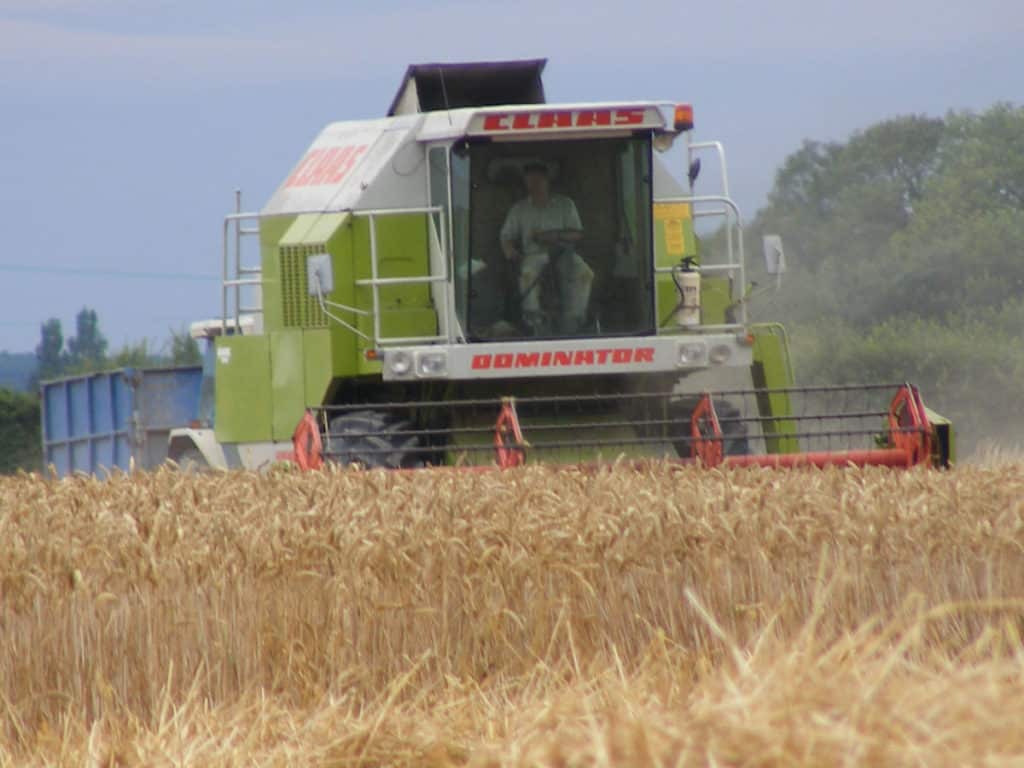
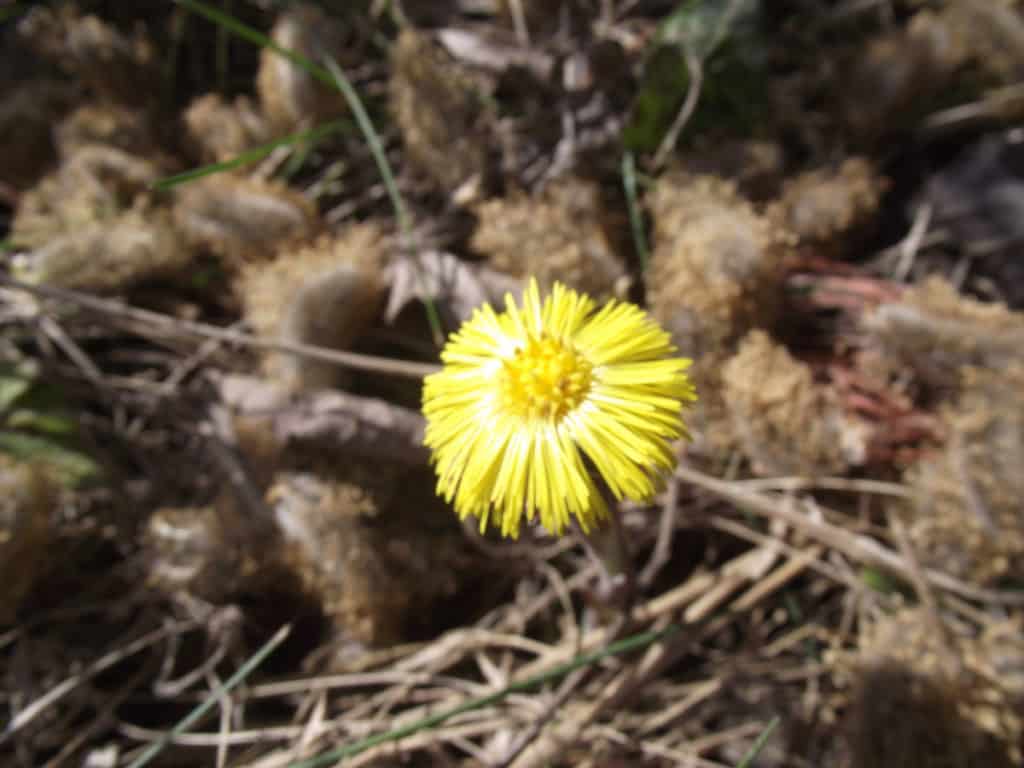
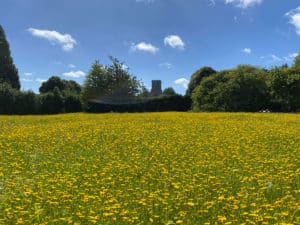
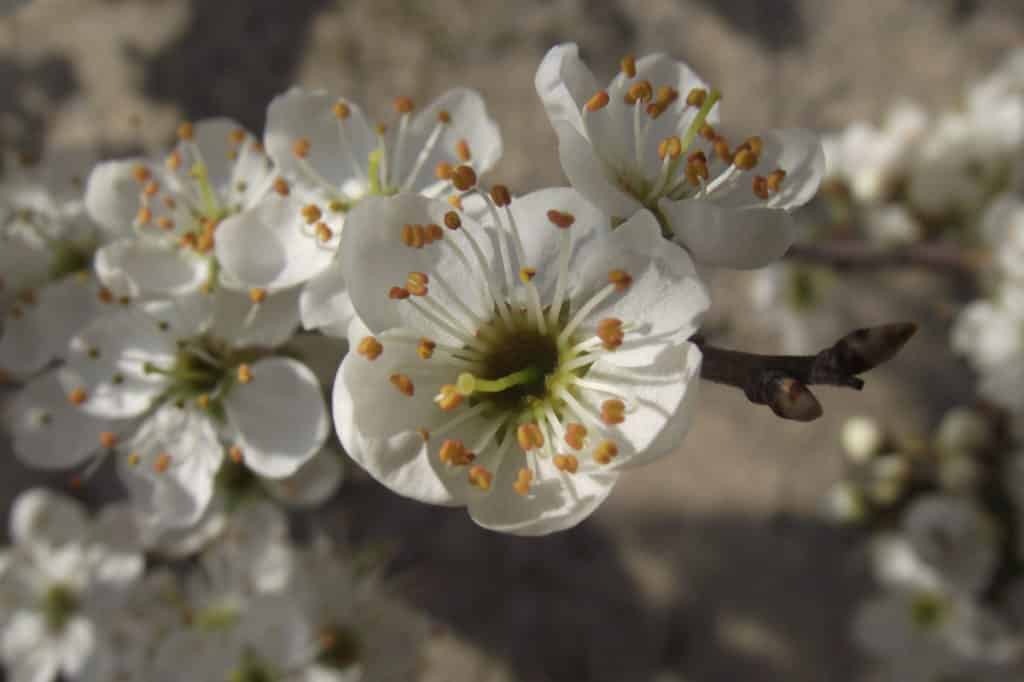
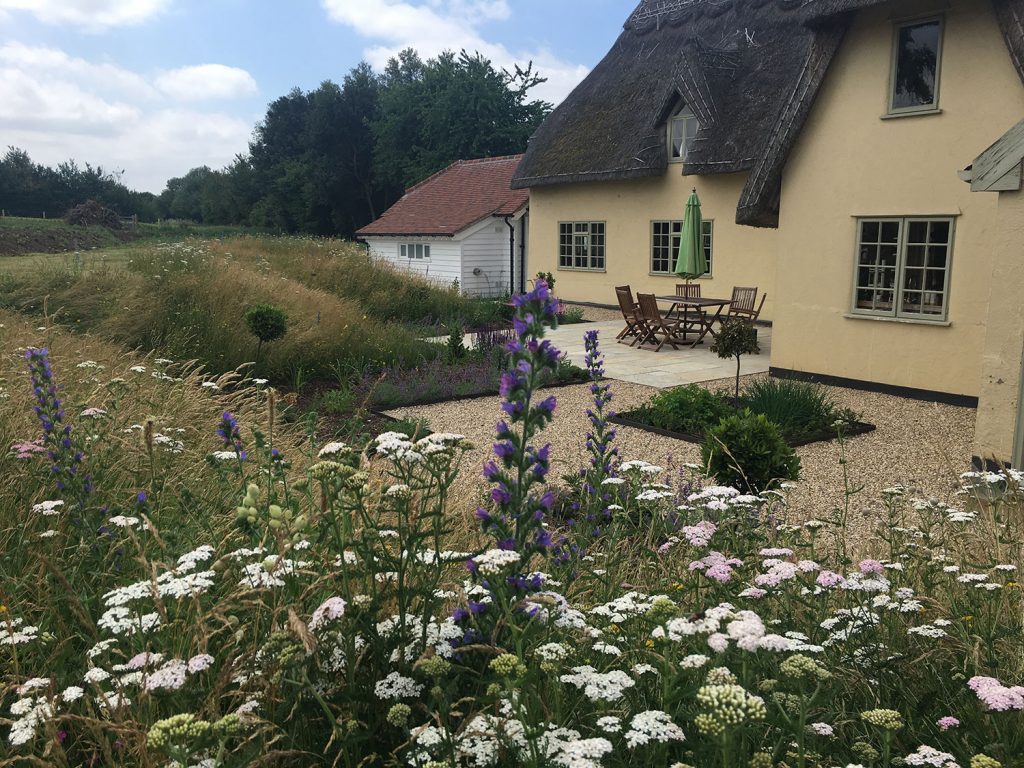
Sorry, the comment form is closed at this time.